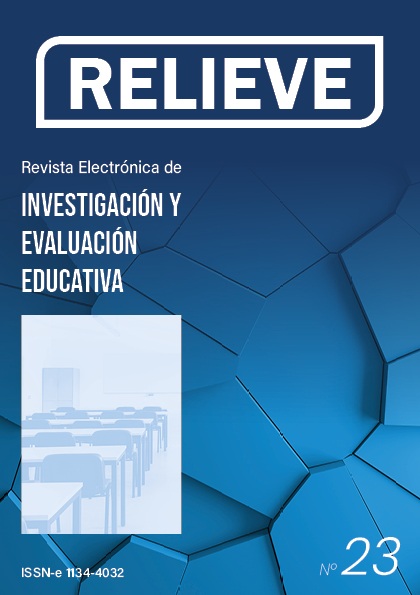Cyberbullying in schools: mobile phone and internet effect in adolescents
DOI:
https://doi.org/10.7203/relieve.23.2.8485Keywords:
Cyberbullying, adolescence, mobile phone, internetAbstract
The study objective is focusing on the different cyberbullying forms (mobile phone and internet), and how these are influenced by the personal and scholar variables. The final sample was composed for a total of 749 students from the Secondary Education, between 12 and 15 years old (M = 13.77 years; DT = 1.12). To collect information, we use a survey “ad hoc” (data about social factors at school) and the Adolescent Victimization through Mobile Phone and Internet Scale (CYBVIC) (Buelga, Cava & Musitu, 2012). In spite of obtaining a similar percentage with the first descriptive analysis, there is a soft prevalence of bulling via mobile phone (18.6%) over bullying via internet (12%) in teenagers. Likewise, among the different behaviours to assault someone, the denigration and the intimacy violation excel in both case, mobile phones and internet. Furthermore, data shows us that teenagers with more predispositions to suffer cyberbullying via mobile phone and internet are girls between thirteen and fifteen years old, who failed some subject and with an unstructured family.Downloads
Downloads
Published
How to Cite
Issue
Section
License
The authors grant non-exclusive rights of exploitation of works published to RELIEVE and consent to be distributed under the Creative Commons Attribution-Noncommercial Use 4.0 International License (CC-BY-NC 4.0), which allows third parties to use the published material whenever the authorship of the work and the source of publication is mentioned, and it is used for non-commercial purposes.
The authors can reach other additional and independent contractual agreements, for the non-exclusive distribution of the version of the work published in this journal (for example, by including it in an institutional repository or publishing it in a book), as long as it is clearly stated that the Original source of publication is this magazine.
Authors are encouraged to disseminate their work after it has been published, through the internet (for example, in institutional archives online or on its website) which can generate interesting exchanges and increase work appointments.
The fact of sending your paper to RELIEVE implies that you accept these conditions.














